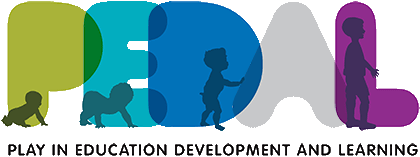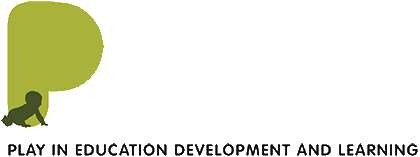The value of block play in childhood
From a young age, children naturally play with and manipulate objects around them to satisfy their curiosity, so it’s no wonder that block play is popular with children of all ages. Building blocks are basic toys, yet they’re far from boring – there are countless ways that blocks can be arranged to create different structures and fantasy worlds. Blocks are relatively inexpensive, and come in different shapes, sizes, and materials. If you don’t have any, try using whatever materials you have around the home, like cardboard boxes or cartons. At first, babies simply hold and explore blocks, but as they get older, they start stacking, sorting, and building simple structures. As they get even older, they build more complex structures and engage in dramatic play with their creations.
As well as being a fun activity, block play also provides lots of opportunities for hands-on learning and can foster the development of a range of skills during childhood. Here are some of the ways block play, and other types of construction play, can benefit children:
- Physical development. Just by picking up and holding blocks, young children are developing fundamental motor skills and hand-eye coordination. During block play children must coordinate the small muscles in their hands to grasp and hold the blocks between their fingers and thumbs. These are known as fine motor skills. It takes a lot of precision and control to carefully place and balance the blocks on top of each other. Block play is also great for motivating children to use their whole bodies: they might crawl or walk towards a block that’s out of reach or stand and reach up to place a block at the top of a tall tower. These are known as gross motor skills.
- Imagination and creativity. The open-ended nature of block building gives children lots of freedom for self-expression and creativity. They might build things they’ve seen in the real world, like bridges, roads, or a farmyard. Or let their imaginations run wild as they create fantasy worlds with castles or spaceships, or both! Block play fosters creative thinking: children must ‘think outside the box’ to combine and recombine loose bricks different ways.
- Thinking skills. Block play is great for developing thinking skills like problem solving, reasoning, and attention. When focused on their building task, children need to put their thinking skills to the test and figure out a solution to reach their goal. For example, working out how to build a bridge that a toy car can go under. This involves planning and testing out different ideas, some that will work and others that won’t. Children must also learn how to be flexible with their approach, concentrate hard, and increase their attentional skills.
- Social skills and language acquisition. Playing with blocks is a great platform for developing social skills. It promotes collaboration, cooperation, and conversation. When playing together, children learn about sharing, turn-taking, teamwork, and communication by talking about their ideas and plans, and listening to others. With the help of grownups or friends, during block play children can learn new words about shapes, sizes, colours, numbers, quantity, and spatial positions, like on, under, above, and next to.
- Early mathematic and scientific concepts. Through hands-on experiences during block play, children are learning early mathematical and scientific concepts, like counting/numeracy, geometry, measurement (size and weight), fractions (whole and parts), symmetry, patterns, balance, stability, and gravity. By experimenting with cause and effect children learn about these properties through active exploration: for example, what happens if you place a block too close to the edge, or pull out a block from the middle of the tower?
What is the evidence that block play benefits child development?
We have summarised some of the key findings below from research studies:
- Block play is linked to better spatial skills1–3. These skills allow children to see objects in their ‘mind’s eye’. For example, a child might use these skills to navigate to their toy box and remember the location of their toy truck in relation to other objects in the box. Spatial skills are important for later school achievement in math and science, and are a big predictor of whether a child will pursue a STEM-related career as an adult4.
- Studies have also found that children who are good at recreating block structures from pictures are also good at maths5, and early play with construction materials like LEGO positively predicts later school achievement in maths6,7.
- During block play, children and adults use more spatial language, so it also helps children learn new vocabulary8.
Although there’s evidence that block play and spatial ability are related, we don’t know that block play causes children to develop better spatial skills. It could be the other way around: better spatial skills could just mean that children like playing with blocks more. That said, there’s some evidence that construction play can benefit learning9,10. For example, in one experimental study, children who played with blocks improved more on a spatial task (mental rotation) than children who played a different game (Scrabble)11. More research is needed to understand whether block play interventions have longer-term benefits in the real world, for example on children’s school attainment.
Top Tips for Block play
While the most important thing about block play is that children are having fun, here are a few tips for extending the play:
- Incorporate natural materials or other toys (e.g. figurines, animals, vehicles) and encourage children to use the blocks in different imaginative ways; blocks are a great platform for make-believe and fantasy.
- Provide lots of space and try playing in different places, like a garden or sandpit.
- Encourage block play with others, this helps children develop social skills. Talking during block play also helps them learn words about spatial concepts, like shapes, sizes, and locations.
- As well as letting children play freely with blocks, you can also try structured block play: set challenges like matching, sorting, counting, or ask a child to recreate a simple structure you’ve built.

References
1Children’s play preferences, construction play with blocks, and visual-spatial skills: Are they related? (Caldera et al., 1999)
2Building Blocks for Developing Spatial Skills: Evidence From a Large, Representative U.S. Sample (Jirout & Newcombe, 2015)
3Early puzzle play: A predictor of preschoolers’ spatial transformation skill (Levine et al., 2012)
4Spatial Ability for STEM Domains: Aligning Over 50 Years of Cumulative Psychological Knowledge Solidifies Its Importance (Wai et al., 2009)
5Finding the missing piece: Blocks, puzzles, and shapes fuel school readiness (Verdine et al., 2014)
6Block play performance among preschoolers as a predictor of later school achievement in mathematics (Wolfgang et al., 2001)
7Advanced constructional play with legos among preschoolers as a predictor of later school achievement in mathematics (Wolfgang et al., 2003)
8Block Talk: Spatial Language During Block Play (Ferrara et al., 2011)
9The development of spatial skills through interventions involving block building activities (Casey et al., 2008)
10Play enhances visual form perception in infancy – an active training study (Schröder et al., 2020)
11An fMRI Study of the Impact of Block Building and Board Games on Spatial Ability (Newman et al., 2016)

